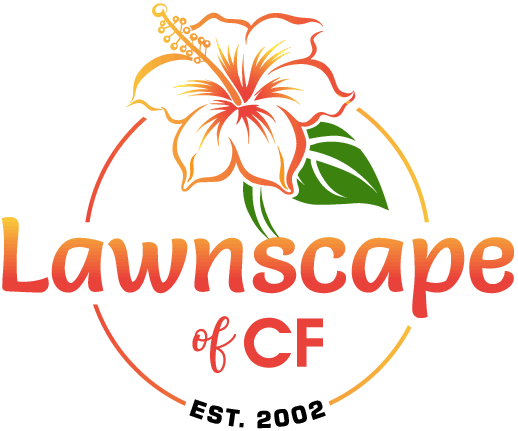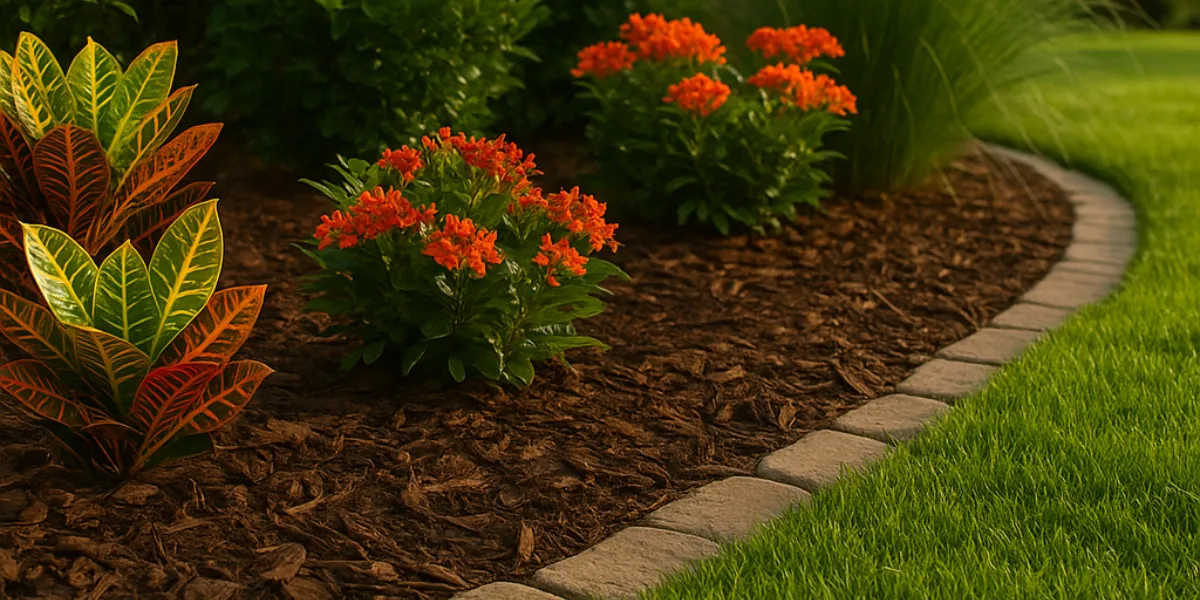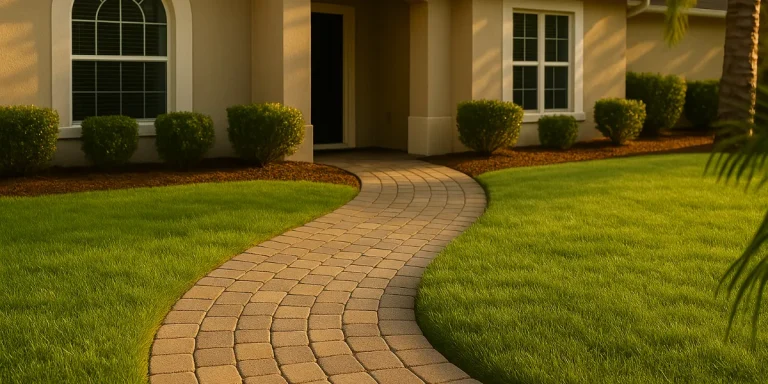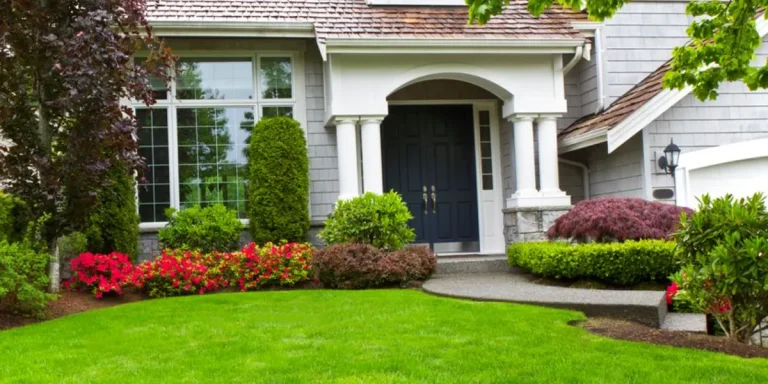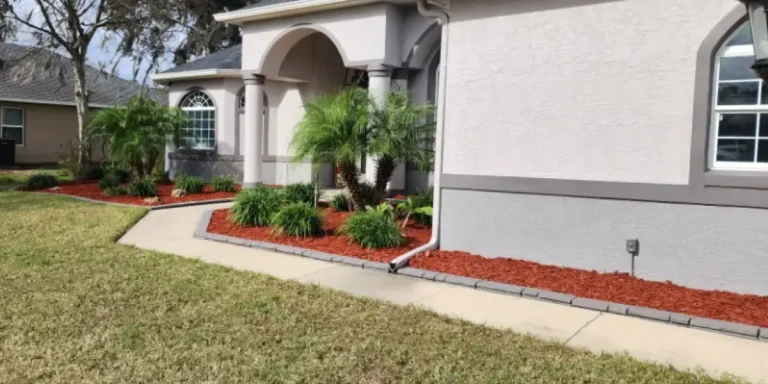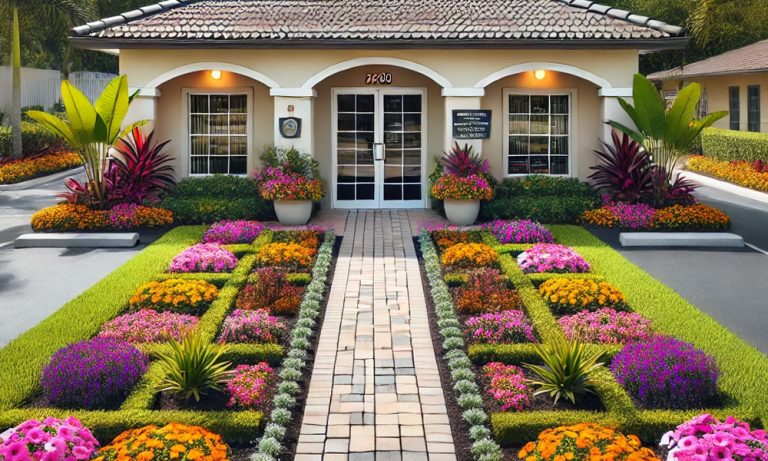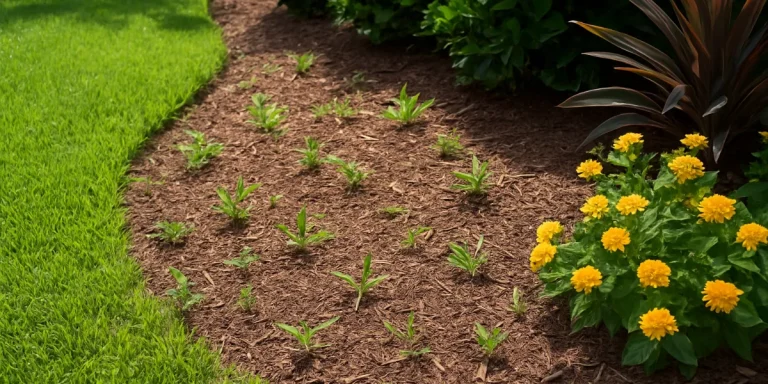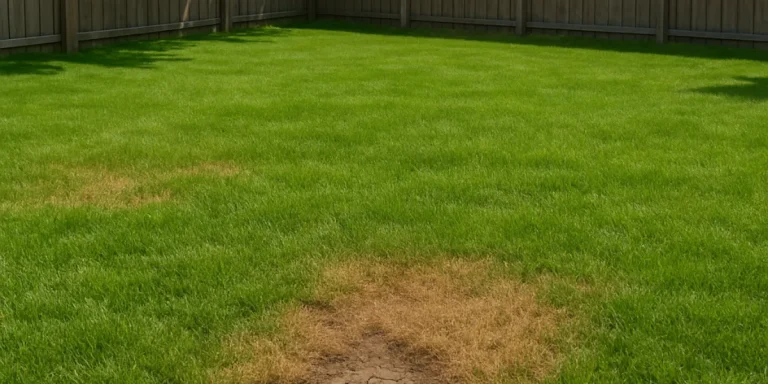How to Keep Your Garden Beds Looking Full All Year
A vibrant garden bed adds curb appeal, color, and seasonal interest to your property—but maintaining that full, thriving look year-round in Florida’s changing climate can be challenging. Between Gainesville’s dry spells, heavy rain, and occasional cold snaps, many homeowners struggle with bare patches, fading flowers, or seasonal gaps in coverage.
At Lawnscape of Central Florida, we specialize in designing and maintaining garden beds that look full and well-balanced in every season. In this post, we’ll share expert strategies to help you keep your garden beds healthy, colorful, and attractive all year long.
Why garden beds lose their fullness
If your garden beds seem to lose their vibrancy or look sparse as the seasons change, you’re not alone. This is a common issue for many Gainesville-area homeowners. What often begins as a full, colorful planting quickly becomes patchy, uneven, or underwhelming—especially without regular care and strategic planning.
Understanding what causes this loss of fullness is the first step in keeping your landscape healthy and attractive year-round.
Seasonal dieback
Many garden beds rely on annuals or tender perennials that naturally fade as the weather changes. In North Central Florida, hot summers, occasional cold snaps, and shifting daylight hours can all cause plants to slow down or die off.
-
- Warm-season annuals like vinca and zinnias thrive in summer but collapse in winter
- Cool-season favorites like pansies may not survive once heat returns
- Perennials often go dormant in colder months, leaving temporary gaps
Without a plan to rotate plants or fill in those spaces, beds can appear bare for long stretches.
Improper plant spacing
A common mistake in garden design is either overcrowding or underplanting. Both can lead to uneven growth and open patches in your beds.
-
- Overcrowding causes plants to compete for light, water, and nutrients, resulting in weak or stunted growth
- Underplanting leads to visible gaps that become more noticeable as plants mature or thin out
- Failing to consider mature plant size can result in an imbalanced layout over time
At Lawnscape of Central Florida, we use thoughtful spacing in every flower bed installation to ensure long-term visual appeal.
Poor soil quality
Healthy plants need healthy soil. Unfortunately, many residential beds are built in compacted, sandy, or nutrient-depleted soil—which is common throughout the Gainesville area.
-
- Compacted soil prevents roots from spreading properly
- Lack of organic matter limits moisture retention and plant development
- Imbalanced pH or poor drainage can cause stress or slow growth
Before installing new plantings, we assess the soil and recommend amendments or fresh topsoil as part of our landscape design process.
Inconsistent maintenance
Even the best-planned garden beds won’t stay full without routine care. Skipping key maintenance tasks can lead to declining health and appearance.
-
- Failure to prune or deadhead leads to leggy or woody plants
- Lack of fertilization can starve your plants of essential nutrients
- Allowing weeds to grow unchecked crowds out flowers and slows growth
- Skipping regular mulch installation leaves the soil exposed and prone to drying or erosion
Consistent lawn maintenance and seasonal touch-ups are the secret to long-lasting, full-looking beds.
1. Plan for year-round interest with staggered bloom times
A full garden bed in January may require different plants than a full garden bed in July. That’s why one of the most effective strategies for maintaining fullness all year is choosing plants with staggered bloom times. In Gainesville’s mild, subtropical climate, homeowners have the advantage of working with a wide selection of annuals, perennials, shrubs, and grasses that thrive at different times of year.
By planting with seasonal variety in mind, you’ll ensure that something is always blooming or visually interesting—even during Florida’s cooler months.
Include a mix of:
-
-
- Early bloomers – such as azaleas, salvia, snapdragons, and verbena, which bring color to your beds as early as late winter or early spring
- Summer stunners – like lantana, pentas, hibiscus, and zinnias, which love the Florida heat and offer continuous blooms through summer and early fall
- Fall fillers – including coleus, ornamental peppers, sedum, and chrysanthemums that add vibrant color and foliage interest during the cooler season
- Evergreens and structure plants – such as boxwoods, dwarf yaupon holly, ferns, and flax lily, which anchor the bed visually and maintain structure throughout the year
-
This approach ensures your beds never look “out of season.” Our flower bed installation services are designed to factor in seasonal succession from the start, so you're not constantly replanting or facing months with empty space.
2. Layer your garden bed like a professional
Flat, one-dimensional beds are one of the most common reasons a landscape looks incomplete—even if it's filled with healthy plants. A layered approach creates visual depth, maximizes space, and keeps every area of your garden looking intentional and lush.
At Lawnscape of Central Florida, we use a three-tiered structure when designing or revamping planting beds. This creates a natural flow and ensures every plant has its place to shine.
Use a 3-tier strategy:
-
-
- Tall plants in the back – Upright shrubs, ornamental grasses (like muhly grass), or flowering staples such as canna lilies or plumbago
- Medium-height fillers in the middle – Perennials like coneflowers, black-eyed Susans, or leafy textures like caladium and coleus
- Low-growing border plants in front – Creeping phlox, dwarf liriope, mondo grass, or trailing groundcovers that soften bed edges
-
This tiered method not only fills space but also creates natural transitions in height, texture, and color. It’s a cornerstone of our landscape design services, particularly when we’re working with beds in high-visibility areas like front yards and entryways.
3. Use mulch to tie everything together
Fresh mulch does more than enhance the appearance of your garden beds—it plays a critical role in keeping them looking full, healthy, and tidy. When mulch is missing or poorly maintained, even the best-designed beds can appear unkempt and unfinished.
Mulch offers multiple visual and functional benefits:
-
-
- Defines the shape, edge, and structure of planting beds
- Helps retain soil moisture and regulate soil temperature
- Prevents weed growth, which can rob plants of nutrients and space
- Reduces erosion and compaction from Florida’s frequent rainstorms
-
At Lawnscape of Central Florida, we offer professional mulch installation using pest-resistant materials like cedar, cypress, or pine bark. Each type offers its own visual tone and texture, so we match the mulch to your design goals, pest sensitivity, and long-term maintenance plan.
4. Refresh with seasonal color changes
Even the most carefully planned garden beds benefit from seasonal updates. Some annuals simply don’t perform well year-round in North Central Florida’s climate. Swapping out tired summer plants for fresh fall or spring color can instantly reinvigorate your beds without starting from scratch.
Great options for seasonal refreshes:
-
-
- Fall/Winter: Pansies, violas, dusty miller, ornamental cabbage, dianthus
- Spring/Summer: Marigolds, vinca, zinnias, salvia, angelonia
-
These seasonal plantings add new life, color, and texture at just the right time. Our team can incorporate seasonal flower bed installations into your landscape maintenance schedule, so your beds always look fresh—without the hassle of planning and replanting on your own.
5. Keep plants trimmed, fed, and supported
No garden bed stays full without regular maintenance. Even fast-growing and well-established plants need occasional attention to keep them from becoming overgrown, leggy, or choked out by weeds. A well-maintained bed not only looks fuller—it also performs better throughout the seasons.
Ongoing care should include:
-
-
- Shrub and bush trimming – To promote fuller growth, prevent overcrowding, and improve plant shape
- Fertilizing – Using seasonal and soil-specific nutrients to ensure continuous blooming and healthy foliage
- Deadheading – Removing spent flowers to encourage reblooming and maintain a clean appearance
- Dividing perennials – Splitting and transplanting overgrown perennials to fill gaps and expand plant coverage
-
If regular upkeep isn’t practical for you, we offer flexible lawn maintenance and yard clean-up packages to handle everything from trimming to fertilizing and mulching—ensuring your garden beds look their best without extra work on your part.
Proudly serving Gainesville and surrounding areas
Lawnscape of Central Florida provides expert landscape design and garden bed services in:
-
- Gainesville
- Ocala
- Williston
- Micanopy
- McIntosh
- Reddick
Whether you need a one-time flower bed makeover or year-round landscape maintenance, we’re here to help.
Bring new life to your garden beds
Don’t settle for patchy or dull garden beds—let us help you create and maintain a vibrant landscape you’ll love year-round. From custom flower bed installations to seasonal color swaps and mulch installation, we offer everything you need to keep your outdoor space full, healthy, and beautiful.
Call Lawnscape of Central Florida today or request a free estimate to get started. We proudly serve Gainesville, Ocala, Williston, Micanopy, McIntosh, and Reddick with professional landscaping solutions tailored to Florida homeowners.
